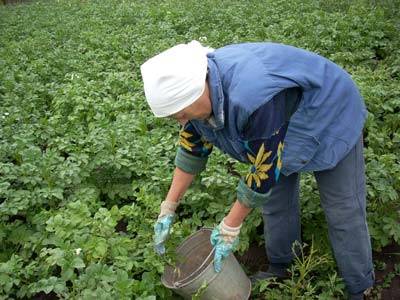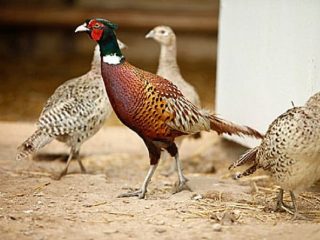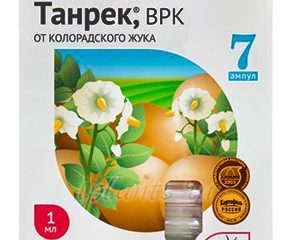Content
There is probably no pest that causes as much damage to garden crops as the Colorado potato beetle. It affects eggplants, tomatoes, peppers and especially potatoes. If there is a large concentration of this pest, potato plantings can be completely eaten up in just a week. This bug accomplished such a “feat” in the USA back in the century before last, leaving the entire state of Colorado without potatoes, which is why it got its name.
Life cycle of a leaf-eating pest
The beetle's life cycle begins in the spring, when adults crawl out of the ground after hibernation. Mating occurs immediately, after which the female lays eggs on the inner surface of the leaves.
To do this, you need to carefully examine the bushes and destroy the egg laying. After about two weeks, and in hot weather even earlier, larvae will hatch from them, which are much more difficult to fight.
The larvae grow quickly and are voracious. In order not to lose the harvest, you need to fight them, just like adult beetles.
Pest control
You can collect these pests manually and fight them using traditional methods, but all these methods are not always effective and require repetition. A radical way is to fight the Colorado potato beetle with the help of insecticides.
Characteristics of pesticides
[get_colorado]
There are enough tools that effectively help cope with this problem. There are several main active ingredients used to control insects.
- Organochlorine compounds.
- Artificially synthesized pyrethroids, analogs of natural pyrethrin.
- Alkaloids.
- Organometallic compounds.
- Organophosphorus compounds.
Clotiamet for the Colorado potato beetle
It is on the basis of the latter compounds that the drug Clotiamet for the Colorado potato beetle was created; user reviews about it are very good.
Mechanism of action
The main active ingredient of this insecticide is clothianidin. It belongs to the group of neonicotinoids. These drugs are related to the well-known nicotine, but, unlike it, are much less toxic to humans and mammals. The target of the insecticide Clotiamet is the nervous system of insects. It blocks nerve impulses, causing paralysis and death of insects, including the Colorado potato beetle. The drug acts in three ways at once: contact, through the intestines, entering all organs and systems of insects.
When treating potato plants, the drug is absorbed not only by the leaves, but also by the roots. Pests eat leaves treated with insecticide and die.The drug is effective from the moment of treatment, and the death of pests occurs no later than 24 hours. Clothiamet protects potato leaves for about two weeks.
How to use
Very little preparation is required for processing. If you follow the instructions for use, only 0.5 g of Clothiamet is diluted with 2 liters of water, with which it forms an emulsion. After thorough stirring, add another 8 liters of water. This amount is enough to process 2 acres of potato field. Treatment is carried out using a sprayer.
The treatment can be carried out only once; it should be timed to coincide with the massive colonization of potato plants by beetle larvae. You can go to the treated area after 5 days.
Danger of the drug
Clothiamet is not phytotoxic. For humans, it has a hazard class of 3, i.e. the degree of danger is moderate. The same goes for mammals. May pose some danger to some fish. Moderately dangerous to birds. Clotimet is extremely dangerous for bees and bumblebees. It causes the destruction of bee colonies. Because of this, it was even prohibited for use by the EU. Compared to the well-known and banned drug DDT in many countries, popularly called dust, the toxicity to bees of preparations based on clothianidin is almost 7000 times greater.
Advantages
- The latest development.
- Does not have phytotoxicity.
- Fast and fairly long-lasting action.
- Compatible with other insecticides and fungicides.
- Low consumption and easy to use.
- Low price, about 30 rubles per ampoule.
When used correctly and in compliance with all personal safety standards, the insecticide Clotiamet is a good option for combating the Colorado potato beetle.














